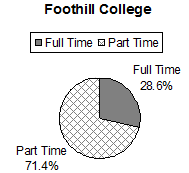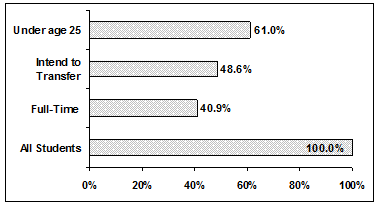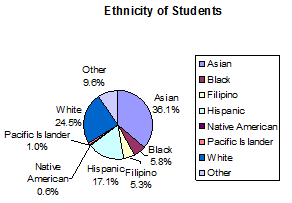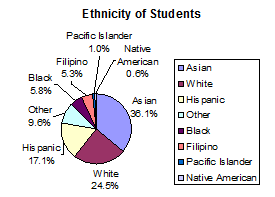You may collect data as numbers and report it categorically. For example, the quiz scores for each student are recorded throughout the term. At the end of the term, the quiz scores are reported as A, B, C, D, or F.
Work collaboratively to determine the correct data type (quantitative or qualitative). Indicate whether quantitative data are continuous or discrete. Hint: Data that are discrete often start with the words "the number of."
- The number of pairs of shoes you own.
- The type of car you drive.
- Where you go on vacation.
- The distance it is from your home to the nearest grocery store.
- The number of classes you take per school year.
- The tuition for your classes
- The type of calculator you use.
- Movie ratings.
- Political party preferences.
- Weight of sumo wrestlers.
- Amount of money won playing poker.
- Number of correct answers on a quiz.
- Peoples' attitudes toward the government.
- IQ scores. (This may cause some discussion.)
Items 1, 5, 11, and 12 are quantitative discrete; items 4, 6, 10, and 14 are quantitative continuous; and items 2, 3, 7, 8, 9, and 13 are qualitative.
Got questions? Get instant answers now! Got questions? Get instant answers now!
Qualitative data discussion
Below are tables of part-time vs full-time students at De Anza College in Cupertino, CA and Foothill College in Los Altos, CA for the Spring 2010 quarter. The tables display counts (frequencies) and percentages or proportions (relative frequencies). The percent columns make comparing the same categories in the colleges easier. Displaying percentages along with the numbers is often helpful, but it is particularly important when comparing sets of data that do not have the same totals, such as the total enrollments for both colleges in this example. Notice how much larger the percentage for part-time students at Foothill College is compared to De Anza College.
De anza college
|
|
Number |
Percent |
| Full-time |
9,200 |
40.9% |
| Part-time |
13,296 |
59.1% |
| Total |
22,496 |
100% |
|
|
Number |
Percent |
| Full-time |
4,059 |
28.6% |
| Part-time |
10,124 |
71.4% |
| Total |
14,183 |
100% |
Tables are a good way of organizing and displaying data. But graphs can be even more helpful in understanding the data. There are no strict rules concerning what graphs to use. Below are pie charts and bar graphs, two graphs that are used to display qualitative data.
In a
pie chart , categories of data are represented by wedges in the circle and are proportional in size to the percent of individuals in each category.
In a
bar graph , the length of the bar for each category is proportional to the number or percent of individuals in each category. Bars may be vertical or horizontal.
A
Pareto chart consists of bars that are sorted into order by category size (largest to smallest).
Look at the graphs and determine which graph (pie or bar) you think displays the comparisons better. This is a matter of preference.
It is a good idea to look at a variety of graphs to see which is the most helpful in displaying the data. We might make different choices of what we think is the "best" graph depending on the data and the context. Our choice also depends on what we are using the data for.
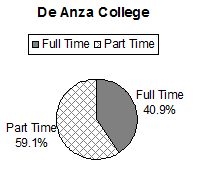 |
|
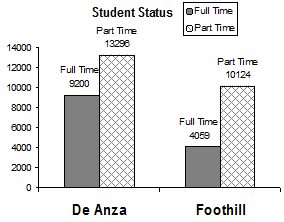 |
Percentages that add to more (or less) than 100%
Sometimes percentages add up to be more than 100% (or less than 100%). In the graph, the percentages add to more than 100% because students can be in more than one category. A bar graph is appropriate to compare the relative size of the categories. A pie chart cannot be used. It also could not be used if the percentages added to less than 100%.
De anza college spring 2010
| Characteristic/Category |
Percent |
| Full-time Students |
40.9% |
| Students who intend to transfer to a 4-year educational institution |
48.6% |
| Students under age 25 |
61.0% |
| TOTAL |
150.5% |
Omitting categories/missing data
The table displays Ethnicity of Students but is missing the "Other/Unknown" category. This category contains people who did not feel they fit into any of the ethnicity categories or declined to respond. Notice that the frequencies do not add up to the total number of students. Create a bar graph and not a pie chart.
Missing data: ethnicity of students de anza college fall term 2007 (census day)
|
Frequency |
Percent |
| Asian |
8,794 |
36.1% |
| Black |
1,412 |
5.8% |
| Filipino |
1,298 |
5.3% |
| Hispanic |
4,180 |
17.1% |
| Native American |
146 |
0.6% |
| Pacific Islander |
236 |
1.0% |
| White |
5,978 |
24.5% |
|
|
|
| TOTAL |
22,044 out of 24,382 |
90.4% out of 100% |
Bar graph without other/unknown category
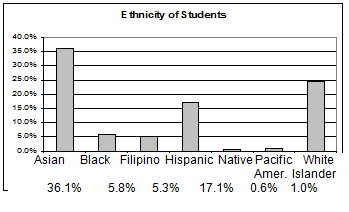 |
The following graph is the same as the previous graph but the "Other/Unknown" percent (9.6%) has been added back in. The "Other/Unknown" category is large compared to some of the other categories (Native American, 0.6%, Pacific Islander 1.0% particularly). This is important to know when we think about what the data are telling us.
This particular bar graph can be hard to understand visually. The graph below it is a Pareto chart. The Pareto chart has the bars sorted from largest to smallest and is easier to read and interpret.
Bar graph with other/unknown category
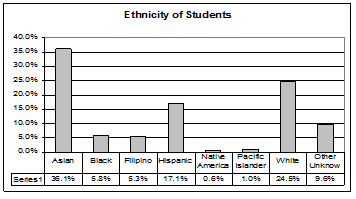 |
Pareto chart with bars sorted by size
 |
Pie charts: no missing data
The following pie charts have the "Other/Unknown" category added back in (since the percentages must add to 100%). The chart on the right is organized having the wedges by size and makes for a more visually informative graph than the unsorted, alphabetical graph on the left.

